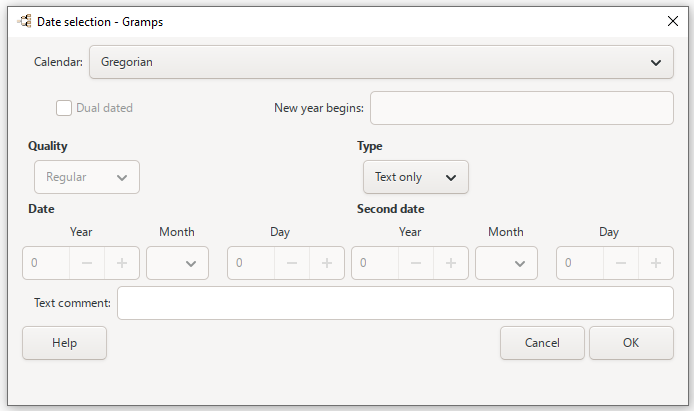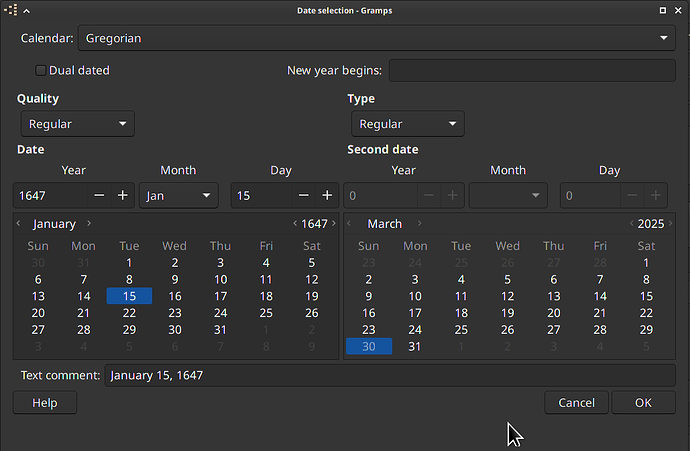Is this tweak shared somewhere?
Intuitively, the To and From imply an (inclusive ≥ and ≤) endpoint and that the opposite endpoint limitation is either implied or will be made explicit.
My logic for this is:
when the From and To are combined in a single phrase (“from 22 Jan 1879 to 14 Feb 1879”), it is limited and inclusive Span.
Likewise, the Before and After are complementary (exclusive < and >) endpoints without implicit limits. When complementary endpoints are added (“between 14 Jun 1654 and Sep 1654”, aka “15 Jun 1654 - 31 Aug 1654” or “> 14 Jun 1654, < Sep 1654”), it becomes an exclusive and limited Range.
So this could translate into an interface update the Date Editor cleanly.

Instead of the one-endpoint dates always pre-filling into the Date fields, right-sided endpoints (To and Before) would pre-fill into the Second Date. The dimmed side of a limited one-sided term would pre-fill with a calculation of the preferences evaluation limit.
Converting betwixt open-ended From/After/To/Before and a FromTo/Between is just a matter of changing the Date Type pop-up menu selection. It would inherit (or refresh the pre-fill value) from the preferences.
Other GUI Changes
There could be feedback of the Preference approximation limits (About ±10 years) that is hotlinked to open the Preferences tab.
The Text Comment box could become a pop-up selector for parsing alternatives for ambiguous text. (Which remembers the last ambiguity resolution for repeating a resolution.) So the European or US date order parsing convention could be manually selected.
Or more ambitiously, an ambiguous Span/Range for a Vital Stat event could be split into 2 Regularly dated Events that share the same place and Citations. So a Birth event of ambiguous 1964-2007 could offer “between 1964 and 2007”, “born 1964, died 2007”, “born 1964, baptized 2007”, and “born 1964, christened 2007”. Marriage could likewise offer a “between” parsing or Event splits into Marriage and Divorce/Separated; or Marriage License and Marriage.
(Does the Left-Right ordering of Spans/Ranges differ for right-to-left writing languages?)
This Date Selection dialog still needs a hot link to spawn an undocked Calendar Gramplet so you can more easily determine references (like “Next Tuesday”) from a given date.

Or to have dual calendars inset in the dialog per feature request 13754 and discussion in PR2001





